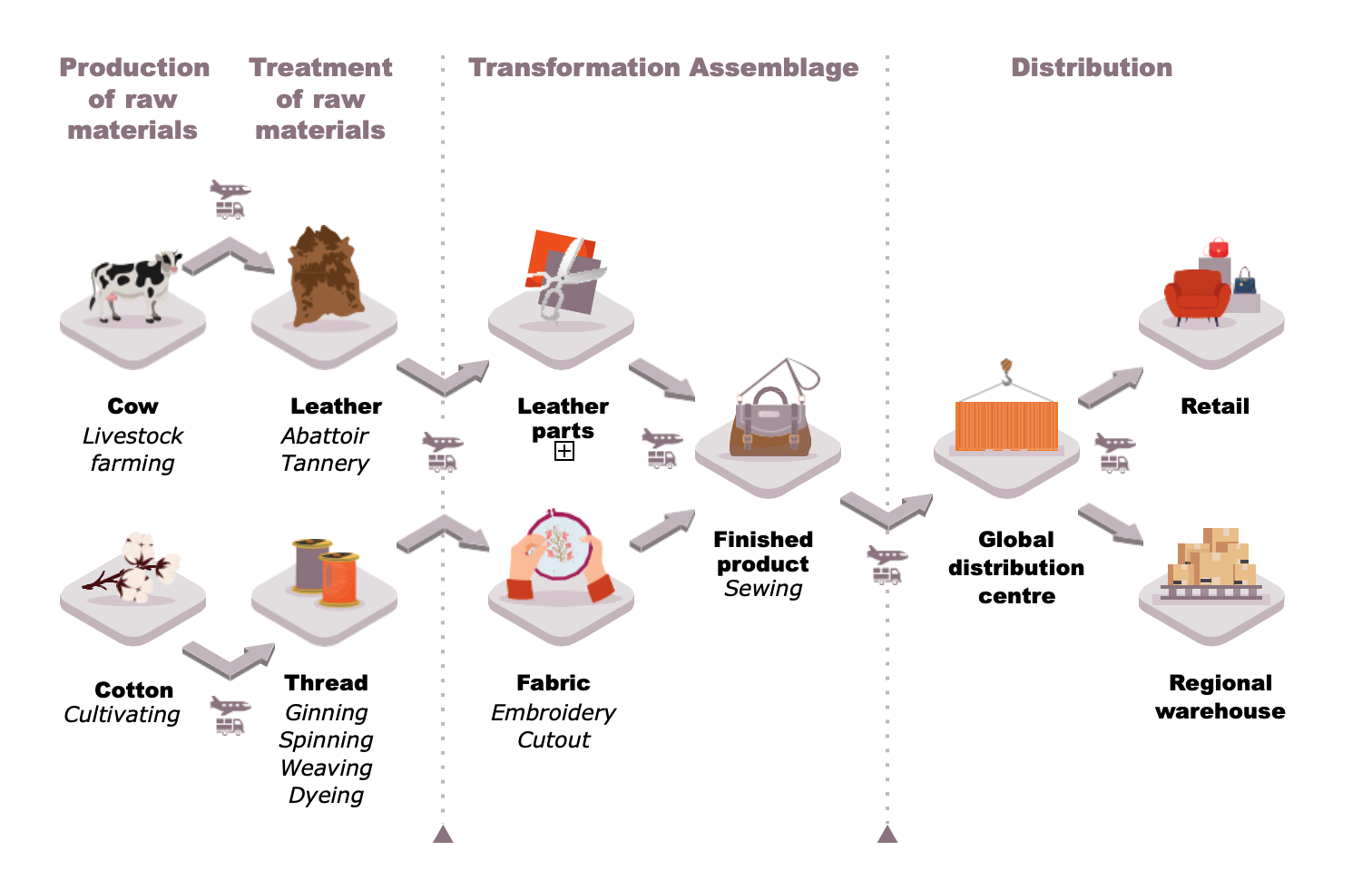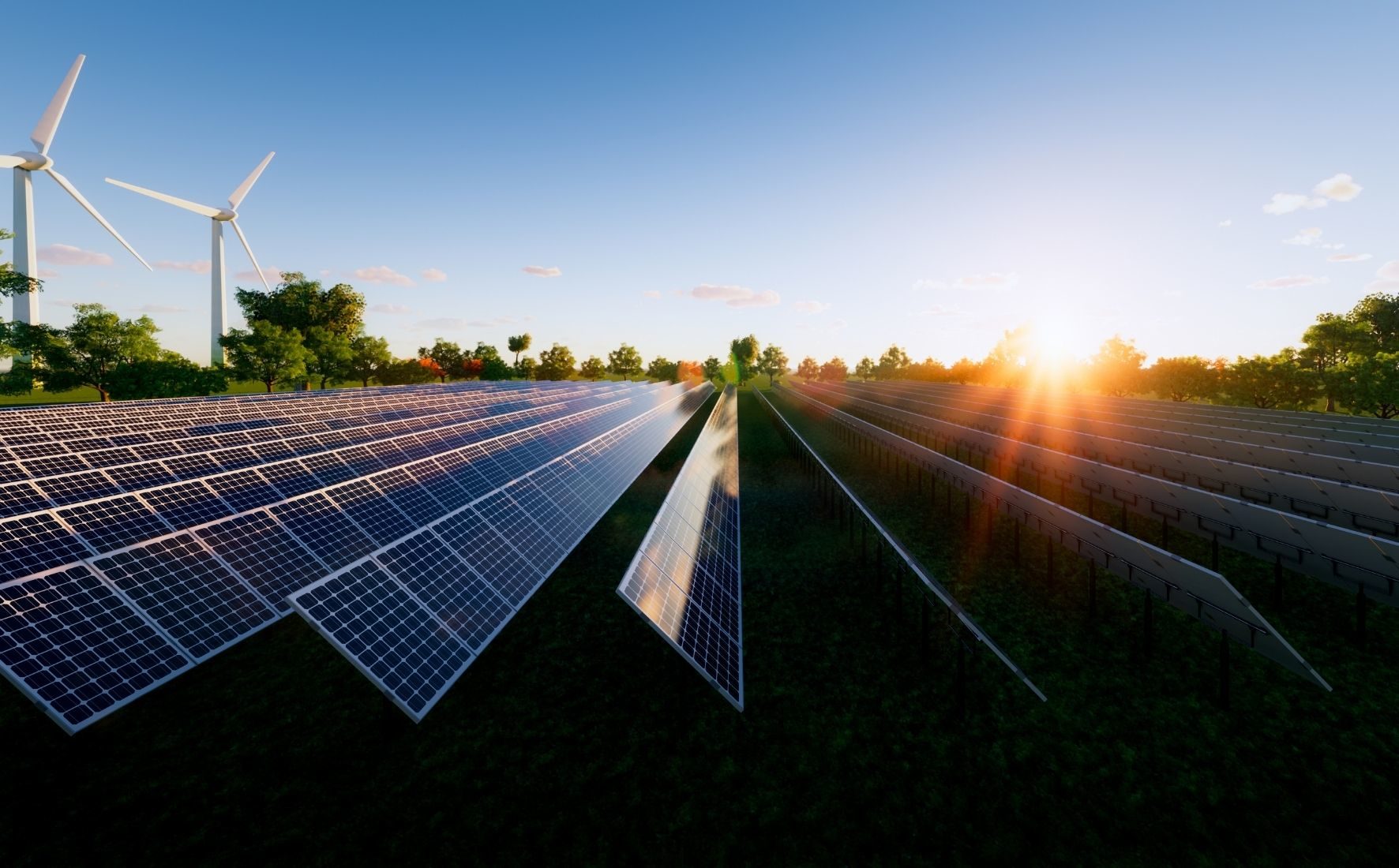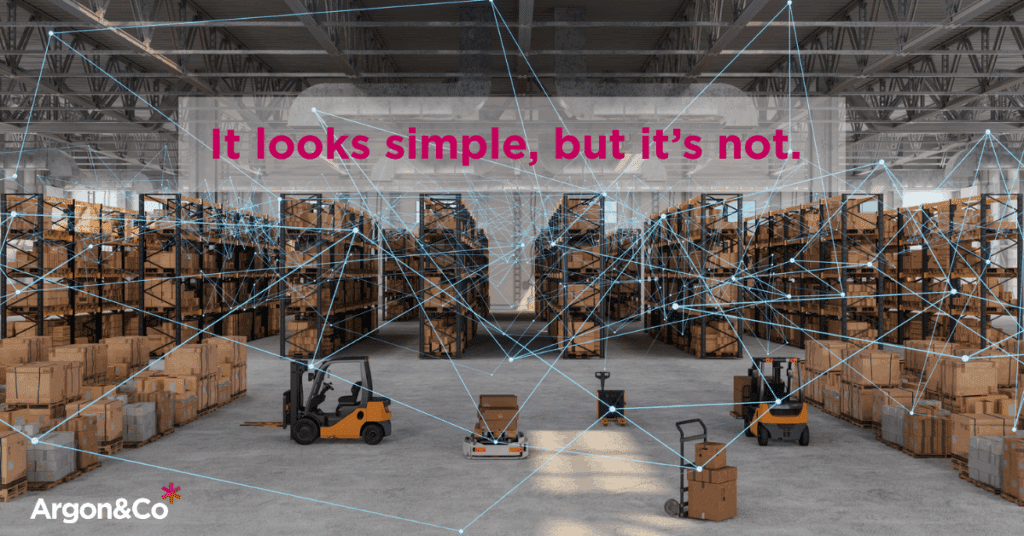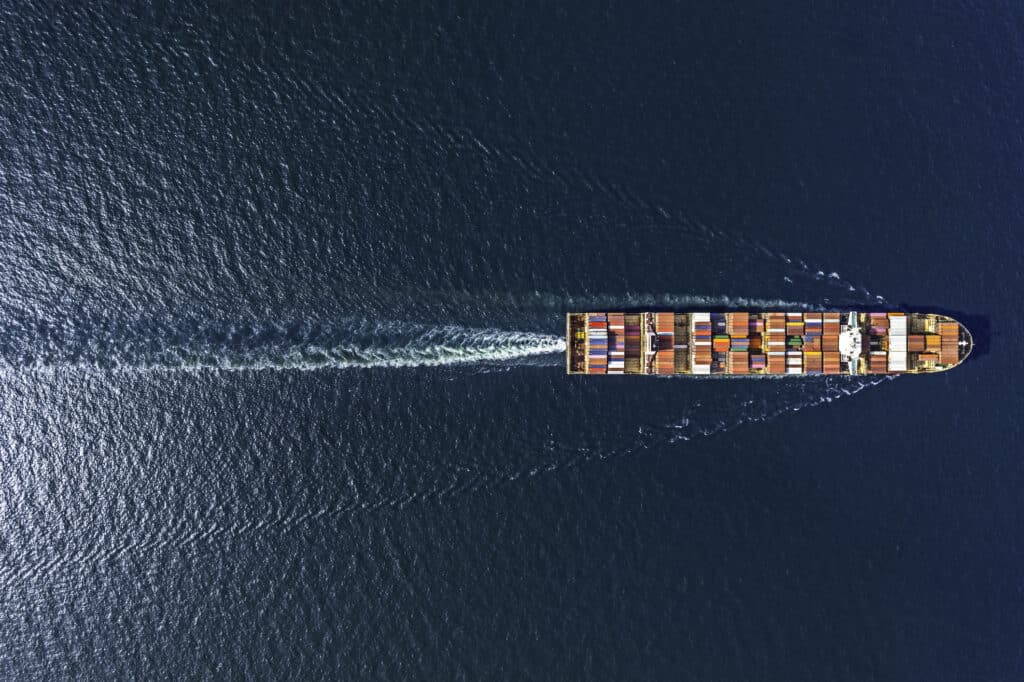Few companies can answer the simple question: “What is the environmental impact of manufacturing, distributing and using our products?”.
This article describes successful methods for measuring environmental impact, critical data considerations for accurate results, and how to maximize efforts with follow-up actions.
Environmental impact is more than just your carbon footprint
Environmental aspects of Corporate Social Responsibility (CSR) reports are generally limited to quantifying emissions directly generated by the company – defined as Scope 1 and Scope 2 according to the Greenhouse Gas Protocol. This scope is limited in a few ways.
First, it covers the emissions generated by support functions (offices, transport), but only a part of the impact of manufacturing (from raw materials to finished products) and distribution. For companies operating in several industries such as luxury goods, telecommunications, retail, and automotive, Scope 1 and Scope 2 emissions may make up less than 20% of the total.
Second, CSR reports are often limited to CO2 emissions, without considering other environmental impacts such as water consumption, waste emissions, air pollution and pressure on the soil.
Life Cycle Assessment: the four stages of analysis
The best way for a business to get a complete and reliable view of its environmental impact is to carry out a Life Cycle Assessment (LCA) across its operations.
Stage one: mapping and scoping
The first stage involves mapping the extended value chain to define the scope of the LCA. Measuring these factors will establish environmental repercussions with improved accuracy.
Mapping the value chain supports the measurement of the environmental footprint of products from end to end. The value chain generally breaks down into three main phases:
- Creation of raw materials
- Production of finished products
- Distribution to consumers
Bear in mind the complexity lies in the variety of factors impacting the environment. While CO2 is the best known, the generation of waste, water consumption, air and water pollution, and pressure on soils are also important factors.
Additional considerations include product use by consumers and ‘end of life’ disposal or recycling. These phases can be broken down into one or more sub-steps, depending on the nature of the products.

Stage two: data collection and analysis
Once the scope is defined and agreed upon, data collection begins. The types and sources of data vary and may include product data (raw materials, nomenclatures, weight, volumes, service life), supplier data, transport data (flow diagram, mode of transport, filling rate), energy data and waste data.
Some data is relatively easy to collect and interpret (transport information), while other results are more complex and challenging (suppliers information – especially those in tiers 2 and 3).
Our recommendation is to use existing data and analysis, such as factors of emissions of raw materials and life cycle analysis.
Ultimately, data collection and analysis often take a lot of time and effort. This calls for a pragmatic approach. Initial assumptions based on rough-cut data are helpful. A refined analysis occurs over time as more information becomes available.
Stage three: interpreting the results
Interpretation and communication of the findings require experts with a macro view and technical background because the data results can be challenging to understand. A professional with this skill set is better equipped to successfully identify relevant findings and ensure a clear and consistent understanding across the organization.
Additionally, the context must be taken into account when communicating findings. A measure is rarely universally comparable, so explaining benchmarks or comparisons is integral to the complete picture. For example, a cubic meter of water consumed in a country under severe water stress has a greater value than the same quantity in a region with abundant water.
Stage four: identifying and prioritizing levers
The final analysis identifies the levers with the most impact on the environmental footprint. These levers involve transforming operations; examples from different parts of the value chain are:
- Product development: ecodesign, including integrating the effect generated by the product during its use and end of life
- Purchasing: sourcing from responsible, local suppliers
- Production: production techniques with lower environmental impact
- Distribution: modes of transport with a lower carbon footprint
Specific examples of levers identified in the fashion and luxury industry are as follows:
- Use of recycled materials
- Reduction in the amount of air transport vs. sea or train
- Switching to organic cotton
- Reducing the need for employees to commute to work daily
In the qualification and prioritization of these levers, it is essential to highlight trade-offs in cost, stock or service levels.
In our experience, the initial environment footprint analysis provides significant insights and challenges the original roadmap to reduce environmental impact. Priorities will be re-ordered, and new high-value levers will be added.
Sharing results with consumers
The initial Life Cycle Assessment of the value chain provides a solid base for launching an environmental excellence plan; this call to action will reduce the product’s environmental impact and give transparency to new and existing consumers.
Companies such as L’Oréal and Kering understand the value of effective, sustainable operations and benefit from positive consumer responses. L’Oréal, for example, has reduced CO2 emissions of its factories and distribution centers significantly since 2005.
Driving continual transformation
This LCA is not a one-time analysis. We recommend regular updates that quantify developments and highlight improvements. For example, in the luxury or fashion industry, measuring the impact of each new collection will produce varying results.
While gathering meaningful data is the starting point for tracking improvements, communicating the results within the organization is critical as well. Well-informed employees are the front runners in driving sustainability transformation.
Last but not least, transforming your operations to be more environmentally responsible is an excellent opportunity to unite and motivate your employees with purpose. The benefits of improved sustainability reach beyond the organization and extend for generations to come.
To find out more, please take a look at the Sustainable operations service at argonandco.com.






